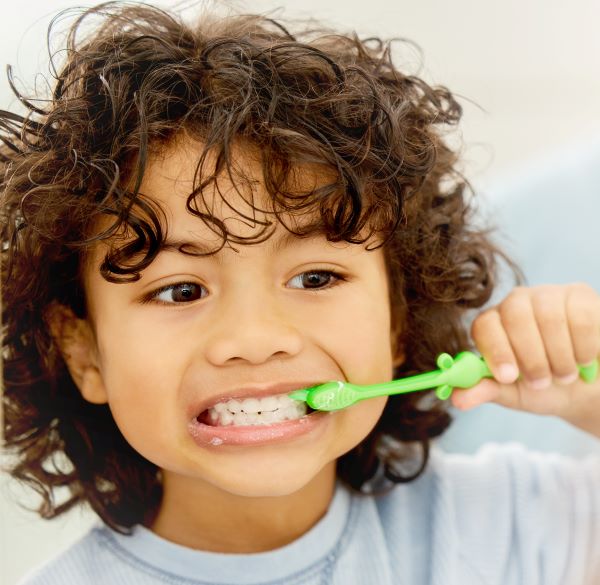 Head Start staff play an important role in helping children develop positive oral health habits that can last a lifetime. Scheduling time for children to brush their teeth with fluoride toothpaste during the program day ensures that children brush at least once a day. This can make a big difference in their lives. Brushing with fluoride toothpaste helps prevent tooth decay.
Head Start staff play an important role in helping children develop positive oral health habits that can last a lifetime. Scheduling time for children to brush their teeth with fluoride toothpaste during the program day ensures that children brush at least once a day. This can make a big difference in their lives. Brushing with fluoride toothpaste helps prevent tooth decay.
Brushing can done at the classroom table or the sink. A quick and structured approach to brushing in the classroom is to have children brush at the table as a group. Find simple step-by-step approaches in the Steps for Toothbrushing at the Table: Growing Healthy Smiles in Early Care and Education Programs video and Classroom Circle Brushing: Quick Reference Guide.
Head Start program staff can follow these steps for hygienic toothbrushing in the classroom for children of all ages:
- Handle toothbrushes carefully to avoid spreading bacteria. Make sure that each child has their own soft-bristled toothbrush with a small head, preferably one designed specifically for children. Label the toothbrush with the child’s name.
- Wash hands with soap and water for at least 20 seconds before and after brushing children’s teeth or helping them brush.
- Wear a new pair of gloves before brushing each child’s teeth or helping them brush.
- When dispensing toothpaste from a tube, put toothpaste for each child on the rim of a disposable cup or on a clean piece of wax paper. The toothpaste is then scooped from there onto the toothbrush. This prevents cross contamination by not allowing the toothbrush to touch the tube opening. Or, make sure each child has their own labeled tube of fluoride toothpaste.
- After brushing, rinse toothbrushes individually with water to clean the bristles. Store the toothbrushes in a holder that allows them to air dry (no toothbrush covers) in an upright position without touching each other. Don’t soak toothbrushes in bleach mixed with water or other disinfecting solutions. Doing this may spread germs. Don’t disinfect toothbrushes in dishwashers or microwaves or by using ultraviolet devices. These methods can damage toothbrushes.
- Replace a toothbrush when the bristles become worn or frayed, about every 3–4 months, or after a child’s illness.
Head Start program staff can also follow these steps for hygienic toothbrushing for children of different ages:
Children Ages About 6 Months to Age 2
- Brush each child’s teeth with a smear (grain of rice size) of fluoride toothpaste as soon as the first tooth comes into the mouth, usually around age 6 to 10 months.
- Don’t rinse the child’s mouth with water. The small amount of fluoride toothpaste that stays in the mouth helps prevent tooth decay.
Children Ages 3–5
- Help children brush their teeth with a pea-sized amount of fluoridated toothpaste.
- After brushing, have children spit the remaining toothpaste into a disposable cup, but don’t have them rinse.
- Encourage children not to place toothbrushes directly on the classroom table or other surfaces.
- Don’t let children play with toothbrushes.
- After children brush, make sure they wash their hands with soap and water for at least 20 seconds.
- After children brush at the classroom table or sink, clean and sanitize the area.
Last Updated: March 27, 2025
